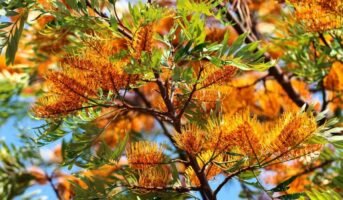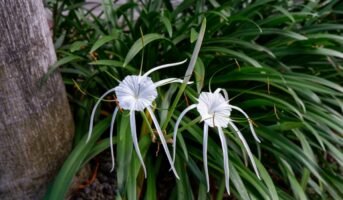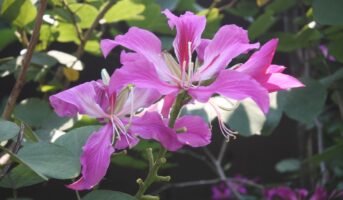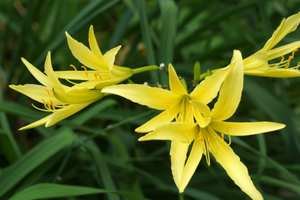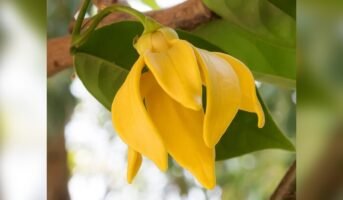The Verbenaceae family is home to the genus Verbena, which also goes by the names vervain and verbenas. It is home to around 150 different types of annual and perennial blooming plants that are either herbaceous or semi-woody.
Verbena hybrida, commonly known as garden verbena, is a decorative plant. The vast majority of the species are indigenous to either the Americas or Asia.

Source: Pinterest
see also about Pericallis Hybrida
Verbena hybrida: Key facts
| Common name | Garden verbena |
| Family | Verbenaceae |
| Maximum height | 1.5 ft |
| Maintenance | Easy |
| Sun exposure | Full Sun |
| Soil pH | 5-7 |
See also: Jade plants benefits and how to take care of themax
Verbena hybrida: Features
- Depending on the species, verbena can either be an annual or a perennial blooming plant. It is a member of the family Verbenaceae and is a herbaceous plant that produces flowers.
- The leaves are typically simple, opposite in arrangement, and hairy in many species, often to a very thick degree.
- The blooms are rather little, each having five petals, and they are produced in thick spikes. The majority of the time, they are a shade of blue but depending on the cultivar, they might also be white, pink, or purple.
- Both the diploid North American lineage and the polyploid South American lineage in this genus have a basic chromosome number of seven. The genus may be split into these two lineages.
- The branch that originated in North America is the ancestor of the European species. It would appear that verbena, as well as the related mock vervains, evolved from the assemblage that is provisionally treated as the genus name Junellia.
- Until the 1990s, both other genera were typically included in the Verbenaceae family.
- At least three instances of intergeneric chloroplast gene transfer have taken place from vervains to Glandularia, two of which occurred between the ancestors of the present-day South American lineages and one of which took place more recently, between V. orcuttiana or V. hastata and G. bipinnatifida.
- The mechanism by which these gene transfers took place is unknown, but it is likely that hybridisation was not involved.
- In addition, there are several species of verbena that are the result of natural hybridisation; the history of the well-known garden vervain/verbena is entirely murky.
- Due to their tight-knit nature, this group’s family trees are notoriously difficult to unravel using traditional approaches to computational phylogenetics.

Source: Pinterest
Verbena hybrida: Growing tips
- Since the majority of verbenas are hybrids that do not “come true” from the seeds you gather from garden plants, it is recommended that seed propagation be done using commercial seeds that have been acquired.
- These seeds have been produced under carefully regulated greenhouse circumstances. They need to be started indoors 12 to 14 weeks before the typical date of the last frost in order to get flowers by the beginning of summer.
- Place the seeds in a plastic bag after having them wrapped in a damp paper towel and then place them in the bag.
- They should be stored in the refrigerator for seven days before being planted in cell trays that have been filled with a commercial seed starting mix.
- The seed should be pressed into the soil, and just enough extra seed-starter mix should be used to cover it.
- The starting mix should be sprayed with water to make it moist, and then the tray should be covered and placed in a dark position away from direct sunlight at a temperature of around 75 degrees Fahrenheit.
- After 21 to 30 days, when the seeds have begun to sprout, take off the cover and place the tray somewhere that receives direct sunlight.
- When the seedlings have developed several sets of true leaves, they are ready to be transferred either into their own pots that have been filled with commercial potting mix or directly into the garden.
- Before you put seedlings in the garden, you should be sure to harden them off first.
Growing by propagation:
- When cutting the ends of healthy stems, use pruners that are sharp and sterile, and cut the clippings to a length of between 4 and 6 inches.
- After removing the leaves from the bottom one-third of the cutting, rooting hormone should be applied to the end that was just cut.
- Fill smaller containers with a mixture of equal parts sand or perlite and a commercial peat-free potting mix that has been combined to provide a porous rooting medium.
- You should bury the bare portion of the stem when you plant the cutting in the potting mix. Be sure to water the pots very carefully so that the potting mix becomes completely saturated.
- Place the pot in an area that has light but is not directly exposed to the sun, and either cover it with a plastic cover or place it in a plastic bag that is not tightly sealed.
- Maintain a regular inspection of the cutting, and if required, add moisture to the potting mix.
- After a few weeks have passed, you may begin evaluating the cutting by giving it a light tug on the stem.
- When you start to feel resistance from the plant, you will know that roots have begun to form.
- When new growth appears on the plant, it is time to either move it into the garden or into larger pots that have been filled with potting mix purchased from a nursery.
Verbena hybrida: Maintenance tips
- Despite the fact that established plants may survive periods of drought, especially those that are planted in containers, they will thrive more if they receive consistent irrigation.
- Also, make sure they have adequate drainage, whether they are growing in containers or garden beds, as this will prevent the roots from being bogged down in wet soil.
- Combine your plant with others that demand about the same amount of water to achieve the greatest outcomes.
- When it comes to fertilising, most of the time, all that is required in garden beds is the incorporation of slow-release fertiliser and the incorporation of organic matter into the soil at the time of planting.
- In any other case, use a fertiliser that is water-soluble to nourish plants that are cultivated in containers routinely.
- Although most do not require deadheading to keep them flowering, you may want to prune back trailing kinds if they begin to overwhelm containers or push out other plants in the yard.
- Deadheading is the process of removing spent flower heads from a plant. Every once in a while, give them a little trim to encourage bigger plants and more abundant bloom production.
Verbena hybrida: Uses
- Verbena has a long history of usage in herbalism and traditional medicine, most frequently in the form of a herbal tonic; nevertheless, there is little evidence to support the claim that it is useful.
- One of the 38 plants that are used to produce Bach flower remedies, a form of alternative medicine that is advocated for its influence on health, is garden verbena.
- The term “Spanish verbena oil” can refer to the essential oil of a number of different species, most often the common vervain. The oil has some financial significance in the herbalism industry.

Source: Pinterest
FAQs:
Is it true that garden verbena grows back each year?
Verbena and all of its cultivars become dormant at the end of the growing season, but they come back to life in the spring thanks to subterranean rhizomes that spread throughout the soil.
Is verbena invasive?
The verbena plant is an invasive species that poses a potential risk to native plant species.
Is Verbena hybrida poisonous?
No, the plant is not poisonous.
Housing News Desk is the news desk of leading online real estate portal, Housing.com. Housing News Desk focuses on a variety of topics such as real estate laws, taxes, current news, property trends, home loans, rentals, décor, green homes, home improvement, etc. The main objective of the news desk, is to cover the real estate sector from the perspective of providing information that is useful to the end-user.
Facebook: https://www.facebook.com/housing.com/
Twitter: https://twitter.com/Housing
Email: [email protected]

